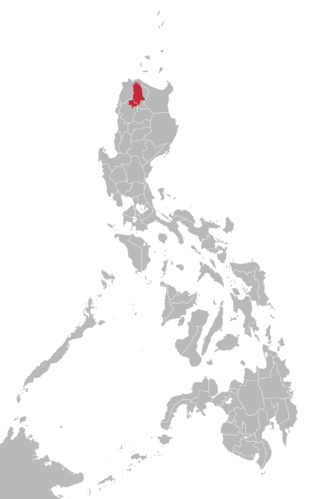
Back Tataramon na Isnag BCL Isnag-ngṳ̄ CDO Bahasa Isnag ID Pagsasao nga Isnag ILO Amanung Isnag PAM Lenga isnag PMS Língua isnag Portuguese Kiisnag Swahili Wikang Isnag Tagalog
| Isnag | |
|---|---|
| Isneg (Ilocano term) | |
| Native to | Philippines |
| Region | most parts of Apayao province, parts of Cagayan, Ilocos Norte, and northern parts of Abra, Luzon |
Native speakers | 50,101 (2020 census)[1] |
| Official status | |
Recognised minority language in | Regional language in the Philippines |
| Language codes | |
| ISO 639-3 | isd – Isnag |
| Glottolog | isna1241 Isnag |
| Linguasphere | 31-CCA-a incl. inner units 31-CCA-aa...-ae |
 The area where the Isnag dialect originated and is spoken, according to Ethnologue | |
Isnag (also called Isneg a term used by the Ilocanos) is a language spoken by around 50, 101 Isnag people of Apayao Province in the Cordillera Administrative Region in the northern Philippines and they are also found in parts of Cagayan, and Ilocos Norte. Their populations are distributed across the municipalities of Calanasan, Kabugao, Pudtol, Flora, Luna, Santa Marcela, and Conner in Apayao; the eastern part of Ilocos Norte, specifically Adams, Carasi, Dumalneg, Vintar, Marcos, Dingras, Solsona, Bangui and Pagudpud; the northwestern part of Cagayan, particularly Santa Praxedes, Claveria, Sanchez Mira, and Pamplona; and the northern part of Abra, particularly Tineg. Around 85% of Isnag are capable of reading the Isnag language.[citation needed] Many Isnag speakers also speak Ilocano.
- ^ Isnag at Ethnologue (18th ed., 2015) (subscription required)